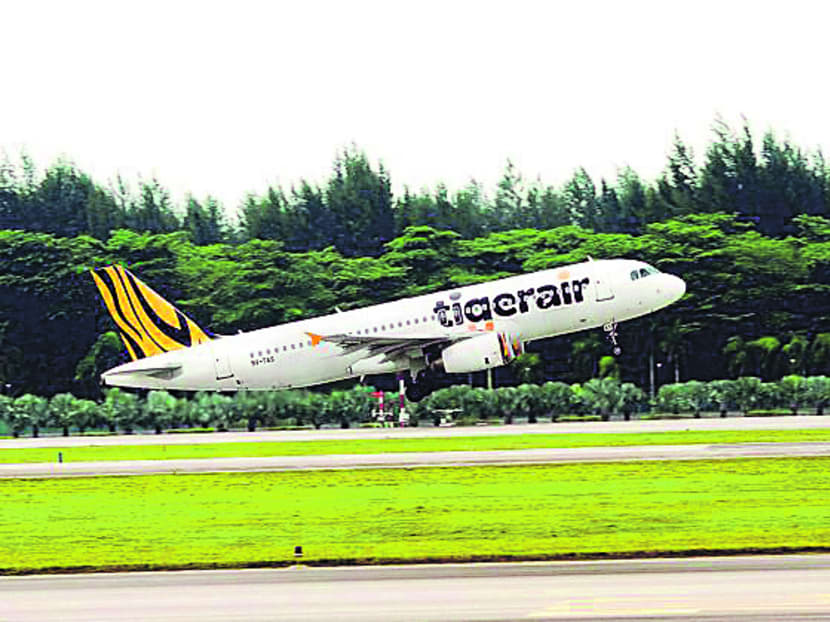Tiger Airways’ loss widens but new CEO upbeat
SINGAPORE — Tiger Airways’ new chief executive, Mr Lee Lik Hsin, is confident that the loss-making budget carrier is finally in a good position to begin making a turnaround after cutting non-profitable ventures and routes, even though a challenging environment persists.

Tiger reported yesterday a net loss of S$65.2 million in the first quarter ended June, an increase from the S$32.8 million loss suffered in the year-ago period. Photo: Tigerair
SINGAPORE — Tiger Airways’ new chief executive, Mr Lee Lik Hsin, is confident that the loss-making budget carrier is finally in a good position to begin making a turnaround after cutting non-profitable ventures and routes, even though a challenging environment persists.
“The whole company is confident that we will be able to do better,” said Mr Lee yesterday at his first results briefing since replacing Mr Koay Peng Yen in May. “Our latest results showed that much of the issue or drain came from joint ventures that weren’t able to work. Now, with our exit from these joint ventures, I would say that everyone in the company is confident that we are in a good position moving forward.”
Mr Lee’s comments came just weeks after Tiger pulled the plug on its loss-making Indonesian venture Tigerair Mandala in a bid to downsize and survive in a crowded market.
The closure added to the red ink that has underlined Tiger’s report card almost every quarter over the past three years.
Tiger reported yesterday a net loss of S$65.2 million in the first quarter ended June, an increase from the S$32.8 million loss suffered in the year-ago period. The share of loss at Mandala amounted to S$35.3 million, on top of a S$14.6 million provision made for the shutdown.
The carrier, which is 40 per cent owned by Singapore Airlines, also saw its yield drop 11.5 per cent on-year despite rising traffic and load factor, which improved to 84.7 per cent last quarter from the 75.1 per cent in the previous three months.
“The first priority is always load factor, which we have managed to grow. Only then can we consider how to slowly improve our yield, which is the next step for us in the upcoming quarter,” Mr Lee said.
“That entails improving overseas sales contribution to our revenue and improving connecting traffic, which we still lack at this point. It’s also about reviewing the network constantly to ascertain which routes are giving us the best yields and which are those we may need to cut or reduce.”
To that end, Tigerair Singapore will terminate flights to Trivandrum city in India in September and reduce the number of flights to Bangkok, Chennai, Jakarta and Kuala Lumpur over the following months, Mr Lee said, adding that there are no new routes in the pipeline.
Meanwhile, Tiger is also expending greater effort in forming strategic alliances for greater connectivity. This includes an interline agreement with the Philippines’ Cebu Pacific, announced on Tuesday. Tiger is also partnering with Singapore Airlines’ long-haul low-cost carrier Scoot to expand in markets such as Taiwan and Thailand.
“We need to market ourselves more like a network carrier rather than as a point-to-point carrier, which has hitherto been our main focus,” Mr Lee stressed.
But whatever the strategies, the industry’s outlook will remain challenging, he added. “Our latest results are representative of what’s happening in the industry.”





